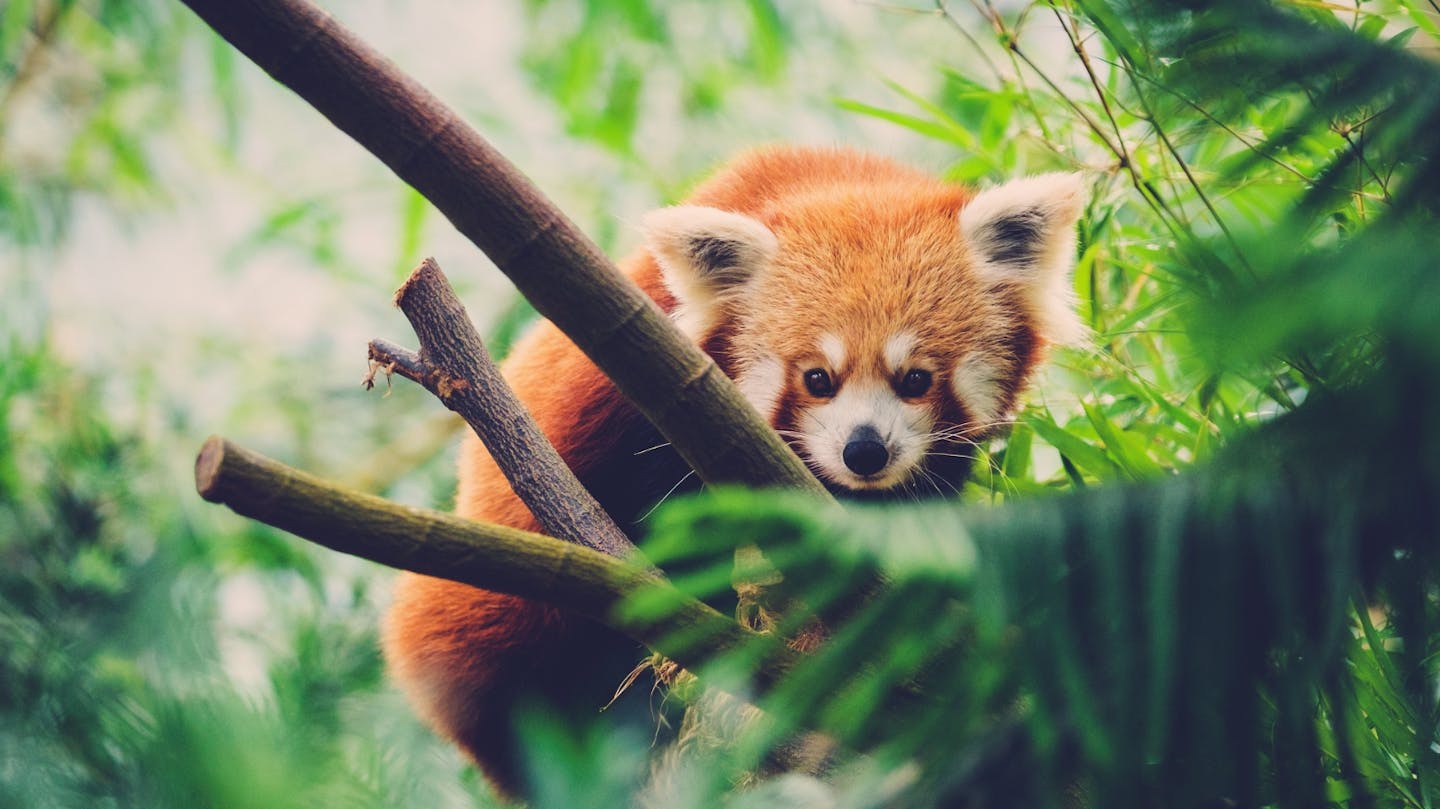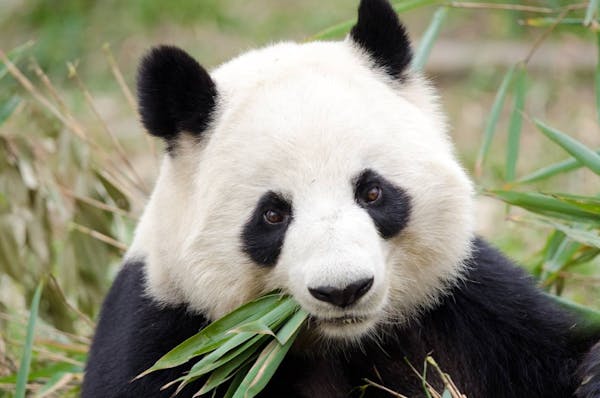Red pandas: Adorable gardeners of the bamboo forest
- Nature Conservation
- Land Conservation
- Iconic Species
- Wildlife
- Mammals
- Indian Subcontinent
- Indomalaya Realm
One Earth’s “Species of the Week” series highlights an iconic species that represents the unique biogeography of each of the 185 bioregions of the Earth.
A forest dweller with a teddy bear face
With soft, reddish-brown fur, a face that looks part raccoon, part teddy bear, and adorable videos of their quirky behavior going viral, red pandas (Ailurus fulgens) are one of the most beloved species on our planet. Native to southwestern China and the eastern Himalayas, they thrive in the conifer forests below the mountains. Also known as the red bear-cat, red cat-bear, and lesser panda, red pandas are not related to giant pandas, cats, or bears.
Biologists previously tried placing them in both the bear and the raccoon families, but genetic testing has classified red pandas as their own distinct family, Ailuridae. However, like the giant panda, the name ‘panda’ is said to come from the Nepali word ponya, meaning bamboo or plant eating animal and the red panda alters its ecosystem by doing just that.

The red panda is the iconic species of the Himalayan Mixed Forests & Grasslands bioregion (IM5), located in the Indian Subcontinent subrealm of Indomalaya.
Tiny size, thick coat, mighty adaptations
Red pandas are about the size of a domestic house cat but with a slightly larger body and immensely thicker coat. Females weigh 3 to 6 kilograms (6.6 to 13.2 lb) and males 3.7 to 6.2 kilograms (8.2 to 13.7 lb).
Like raccoons, each individual red panda has distinct white markings on its face and alternating colored rings on its tail. These bushy tails provide balance, excellent camouflage, and warmth in the winter as they use them to cover themselves like a blanket.
Their legs are short and black with thick fur on their paws which helps them grip snow-covered and icy surfaces.
Tree climber with specialized paws
They are solitary and quiet animals except for mating season, when red pandas begin to make twittering noises to find each other. Otherwise, they are extremely territorial.
The seemingly cute images of two red pandas meeting and standing on their hind legs is actually a warning, not a greeting. It is done to make themselves appear larger and show off the sharp claws on their front paws.
Their specialized curved, semi-retractile claws and “false thumb,” which is an extension of the wrist bone, are designed for a life among the trees and for eating bamboo.

Red panda's thick, reddish coat helps them blend into mossy trees and forest canopies, providing camouflage from predators. Image credit: Belizar73 from Getty Images via Canva.
A diet of bamboo and vital ecological role
Occasionally, their diet consists of small mammals, birds, eggs, flowers, and berries, but 95% of a red panda’s food source is bamboo. Like the giant panda, red pandas cannot digest cellulose, so they must consume a large volume of bamboo to survive.
One study found that female red pandas ate approximately 20,000 bamboo leaves in a single day. With this diet, red pandas keep bamboo plants healthy, which in turn helps clean our planet’s air.
Crucial in the balance of oxygen and carbon dioxide in the atmosphere, a grove of bamboo releases 35% more oxygen than an equivalent grouping of trees.
From forest icon to endangered species
Today, fewer than 10,000 mature individuals remain in the wild, and the species is listed as Endangered on the IUCN Red List. The greatest threat is habitat loss and fragmentation due to human development, which continues to chip away at the bamboo forests they rely on.

One panda can eat up to 20,000 bamboo leaves in a single day. This helps keep forests healthy and supports oxygen-rich ecosystems. Image credit: Freder from Getty Images via Canva.
Viral fame meets conservation hope
Ironically, the same quirky behavior that has earned them millions of views online may help secure their future. As people share videos of them tumbling in the snow or sleeping in trees, public awareness grows. Conservation initiatives like the Red Panda Network have seen increased interest and support thanks to their internet popularity.
So go ahead—watch that video one more time. That little moment of joy might just help protect a species, a forest, and the air we all breathe.
Support Nature Conservation



